Fifteen years on, VRF technology has found greater acceptance among clients, consultants and contractors in the GCC region, but the consensus among the three is that it is lagging behind when it comes to sharing performance data. Hannah Jo Uy of Climate Control Middle East has the report
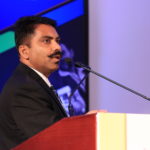
Dharmesh Sawant
Proponents – mainly manufacturers – of the variable refrigerant flow (VRF) technology are a cheery bunch, reeling off its numerous advantages to growingly less-reluctant clients, consultants and contractors in the GCC region. Cometh every year, and the manufacturers extol the additional features they have incorporated in the technology, and the resulting proliferation of possibilities. Dharmesh Sawant, Sales Director, Hisense VRF, Qingdao Hisense Hitachi Air-conditioning Marketing Co., Ltd., is one such VRF-evangelist. His pet-theme of the season is the possibility of connecting an entire floor of apartments with one outdoor unit.
While speaking at the 7th Middle East VRF Conference, on April 29 in Ras Al Khaimah, an event that was held under the patronage of Ras Al Khaimah Municipality, Sawant enthusiastically described the numerous advantages VRF technology has in terms of heat parameters, installation, redundancy and diversity of application. He pointed out that VRF is increasingly being viewed as less of a niche product and more of a value-based solution that can address concerns related to space, sustainability, and capital and operating costs. He also pointed out to the fact that the price of the system has become more competitive, adding that it has drastically reduced from AED 4,500 per tonne to AED 3,200. “If you look at the balance between capital costs and efficiency, VRF is the best,” he said, his eyes gleaming. “Yes, a water-cooled chiller has a COP of 5 compared to a VRF system with a COP of 4.2, but water-cooled systems have a higher capital cost.” And with the possibility of connecting an entire floor to a single outdoor unit, he said, the cost of VRF technology will climb down further, owing to a reduced connection fee and savings in utility space.
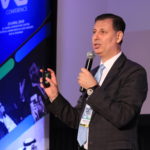
Amjad Abu Alika
Amjad Abu Alika, Senior Manager LG Electronics MEA Business Solutions is another VRF-evangelist. Face flush with excitement, he spoke enthusiastically of newer features in VRF with the passing of every year. He highlighted how systems are now equipped with dual-sensing control for temperature and humidity, and features that have made it possible to achieve an increase in seasonal efficiency of up to 31%. Overall, he said, the technology itself has bulked up, opening up the possibility of large-capacity outdoor units, each providing up to 20 HP. Further making a case for VRF technology, Alika said that inverter compressors in units are improving efficiency by 10% as well as its reliability. He said that VRF technology is improving part-load efficiency, offering a COP of 4.46 in T1 conditions, which reflects a five per cent increase in efficiency, and a COP of 3.44 in T3 conditions, which reflects a 13% increase in efficiency.
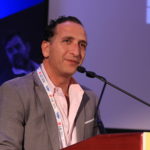
Mansour Kharoub
Mansour Kharoub, Associate Principal, Mechanical Engineering Services, at consultancy firm, Khatib & Alami, weighed in by highlighting that a reliable VRF metering device is now a reality and is available for all manufacturers, as certified by third parties. “Metering can be implemented at any stage, since most of the wiring is on the roof,” he explained. Kharoub pointed out that this is vital, as “what cannot be measured, cannot be controlled”. Alika seconded this, pointing out that developers are seeing the merits of VRF technology owing to metering strategies implemented in big residential projects.

Farooq Monis Shaikh
Farooq Monis Shaikh, Assistant Manager, Engineering and Facility, RAK Hospital, also weighed in, sharing that VRF presents a wide range of possibilities. “We have installed some VRF units and have received 30-40% energy savings,” he said, “but the challenge is in integrating VRF in existing buildings.” Ahmed Elkiki, Director of Technical Services, RAK Hospitality, Government of Ras Al Khaimah, shared that the organisation is already using VRF technology in two of the four hotels in its portfolio. In one instance, six residential buildings were converted into a hotel. “They had water-cooled chillers, but we had to add buildings like restaurants and a lobby,” he explained, adding VRF technology was the right option in this context. Elkiki also highlighted the financial payback of more efficient equipment. “As hotel owners, savings from energy reduction contributes to the overall bottom-line,” he said. “Whether one room or a hundred rooms are occupied, we will still be running the chillers. The great thing about VRF is performance as well as partial-load features.”

Ahmed Elkiki
Liju Thomas, President, ASHRAE Falcon Chapter, said that he believes VRF technology will make farther inroads in the market, pointing out its advantages from a refrigerant perspective, as the equipment uses less gas. However, he said, bottlenecks do exist in view of economics and lifecycle of the equipment. Thomas said that while VRF is ideal for low-rise buildings, chillers are still favoured for high rises, especially in view of their life cycle, which typically lasts 25-30 years compared to VRF, which has a lifecycle of 10-15 years.
Alika admitted that adoption of the technology still greatly varies from project to project and client to client. “Some think it’s more expensive compared to DX, and some think they can save money compared to chillers,” he said. “It depends on the demand and the use.”
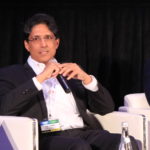
Liju Thomas
Discussing factors that affect choice of equipment, Alika said that clients have specific targets that drive them to take into account initial cost, running cost, quality and reliability. If they have a particular target price they cannot have a high-quality product, but if performance is of concern then the selection should be based on power consumption, he emphasised. Sawant added that in addition to the type of project dictating the parameters of equipment choice, application should be taken into account, saying that premium villas in coastal areas may face an issue with humidity and require more precise controls, while projects nearer to the desert may have stronger requirement for self-cleaning features.
Why am I not doing VRF?
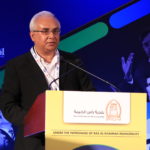
Sougata Nandi
Amidst all this, there are those that question the extent of progress made by VRF technology in the region. Sougata Nandi, CEO, 3e Advisory, and Chair of the Conference, remarked that while manufacturers are leading innovation and technology upgrades, developers have a huge part to play in driving adoption of such technology and challenging the industry towards excellence. Saying so, he asked Graham Hallett, Development Director, Marjan Properties, his views on VRF technology. Hallett responded by pointing out that from his experience developers are not always given the opportunity to do so and that before engaging in a debate on the pros and cons of VRF technology it is important to dial in on key concerns of developers. “We are looking for answers and don’t know where to find them,” he said of VRF technology. “We are doing a three-star hotel with water-cooled chiller, and I’m sitting here today thinking, ‘Why am I not doing VRF?’” This, he said, is the problem, as despite the fact that VRF is a 15-year-old technology, there is very little talk on applying the solution in three-star hotels, adding that the diversity in application remains overlooked by developers in the sector. “I don’t know why,” he said, “(Hospitality) is the biggest development in the UAE, and it will be the biggest in RAK. Before we throw performance on consultants and contractors, let’s find out what’s in the market and what we can apply. With regard to buildings, we tend to reinvent the wheel. We have to get more of the communication. We need speed to market, data and quick decisions.”
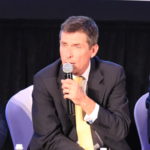
Graham Hallett
Hassan Younes, President-Elect, ASHRAE Falcon Chapter, Director, Griffin Consultants, echoed the need for greater communication and data. He said he believes a greater thrust needs to be given to benchmarking of buildings, as a precursor to retrofit initiatives. Younes stressed that Griffin Consultants, along with Regulatory and Supervisory Bureau Dubai, the Dubai Supreme Council of Energy and Emirates GBC, are doing a lot in this space across Dubai and Abu Dhabi, through modelling of energy intensity, and going further to take into account the contribution of different air conditioning systems in this regard. Thomas underlined the importance of such endeavours, pointing out, “If you keep constructing something without benchmarking, how do you know if it’s good or bad?”

Hassan Younes
Hallett believes this issue extends to VRF systems. “There is not enough published and accessible data from suppliers on the energy- efficiency benefits of the technology,” he said. “We need more information. There is a need to integrate engineering and consulting services with research. I fear that HVAC design and information transfer is not there to get a highly efficient design at the get go.” He stressed that this is vital if the VRF industry wants to offer developers the flexibility to upsize and diversify. Hallet added, “What we need to do more as an industry is to look at the powerhouses – the suppliers and manufacturers – and allow them to integrate their knowledge. This, he said, has been sadly lacking in the industry, which is troubling, given that HVAC, being a long-term investment, poses an enormous burden of responsibility among developers, who find it difficult to rely on consultants. The industry, he said, must have data within reach of clients and operators.
Nandi shared similar observations on the existing information gap in the market, saying that clients are unable to access data, and their feedback is rarely taken into account. As such, he said, the industry is operating in silos, emphasising that consultants must reflect on how to work to close the gap.
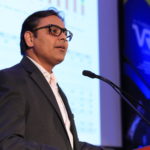
Sagar Kulkarni
Sagar Kulkarni, Managing Director, Consistent Engineering Consultants, emphasised that it’s not only about having the data available, it’s also about “asking the right questions to the right person that can lead to the right solution”. Elkiki pointed out that consultants steer decision of the clients and specify based on comfort and how confident they are in a technology. As such, Elkiki pointed out that many may not have updated knowledge that will allow them to provide the most efficient system and that “not every person in consultancy knows how to design a VRF”.
Elkiki said this disconnect can also be observed between consultants and operators, advocating a stronger follow-up mechanism. “Have you visited a project since you designed it?” he asked consultants in the room. “Consultants need to be more on the ground to see what happens in operation and design, based on what’s happening.”
Admittedly, Elkiki said consultants are under a fair amount of pressure, with many subject to the whims of developers, who only build to sell. Hallett echoed this, drawing a comparison between the mechanisms driving the two kinds of development. “There is developing to sell to investors and developing to keep, own and operate,” he said. “Developing to sell to investors is why we have regulation to protect the end-user.” Regulation, Hallett stressed, is the only way to ensure the standards of such developments, pointing out that the issue is not confined to the UAE, as there are many developments in the United Kingdom sold off through agencies that need regulating.
Nandi added that there has to be strong link between technical approach and commercial viability. “In my experience, the biggest killer of sustainability is the procurement department,” he said. “Developers are trying to adopt, the service provider is there with the technology, the consultant then sits with procurement, who goes with his numbers. It’s the foot soldiers that kill the whole thing.”

Juma Yousef Juma
Juma Yousef Juma, CEO, GETCO, recommended pushing for performance-based contracts in this regard, pointing out that such guarantees will go a long way in promoting accountability across the chain and ensure that cost is not the main parameter driving equipment choice. That way, he said, more effort will be undertaken by stakeholders to understand the capabilities of a product. “This is the final resort,” he said. “Technology is a tool, people are the key part of educating to understand the performance.” Thomas added that buildings should also be valued differently, so that developers are more aware of the cost of cutting corners which may lead to installation of subpar products. “Why should a tenant pay the same rent for a bad building and for a good building?” he asked.
With regard to developments that are designed to be owned and operated, Hallett said the industry is largely self-regulating. “We don’t buy into Barjeel or green building, because we have to,” he said, adding that Marjan Properties and its team of operators comply with higher standards following an assessment of Return on Investment (ROI). Elkiki echoed this. “We are building hotels, and we have these hotels for 30 years,” he said. “It’s important for us that design is okay for the long-term.”
Hallett said that as developers his tribe and he are looking for a coordinated and coherent response from the consultant and supplier, with manufacturers having an important role to play in this regard. “If they want the job, they have to give us more than a piece of equipment,” he said. “This VRF technology does not sound complicated. We leave the modelling of buildings to consultants. Manufacturers should assist in modelling and penetrate the consultancy space.” Hallett pointed out that clients don’t mind spending money for the right advice at the right stage”. This, he said, will help in mitigating costs that may come from having to implement changes down the line.
Closing the gap
In view of the existing knowledge gap in the market, Nandi pointed out that certification and training can play a key role in advancing the adoption of VRF technology. “In everything, if you don’t have the right people handling the right things, technology won’t get balanced,” he said. Echoing this, Younes announced that ASHRAE will be introducing a Guideline specific to VRF systems. Younes shared that Guideline 41 will cover the design, installation and commissioning of VRF systems, globally. “The first batch of Public Review of the Guideline was in March 2019, and the Guideline is expected to be released next year,” he said.
Thomas added that essentially, there is a need to look at every building in a holistic way. Buildings, he said, progress in stages, from design, construction, commissioning and operation, and ignoring any stage will negate the efficiency of the overall project. Hallett echoed this, saying there is a need for the industry as a whole to move forward to ensure the right technology goes into the right project, saying that having heard VRF has been around for 15 years, he fears that in the next 15 years the market will continue to drag its feet when it comes to adopting such technologies. As Nandi aptly pointed out. “There is no bigger crime than repeating the same mistake over and over again.” A mistake that poses a grave threat with a growing rate of urbanisation that will drive demand for cooling beyond imagination.
Copyright © 2006-2025 - CPI Industry. All rights reserved.